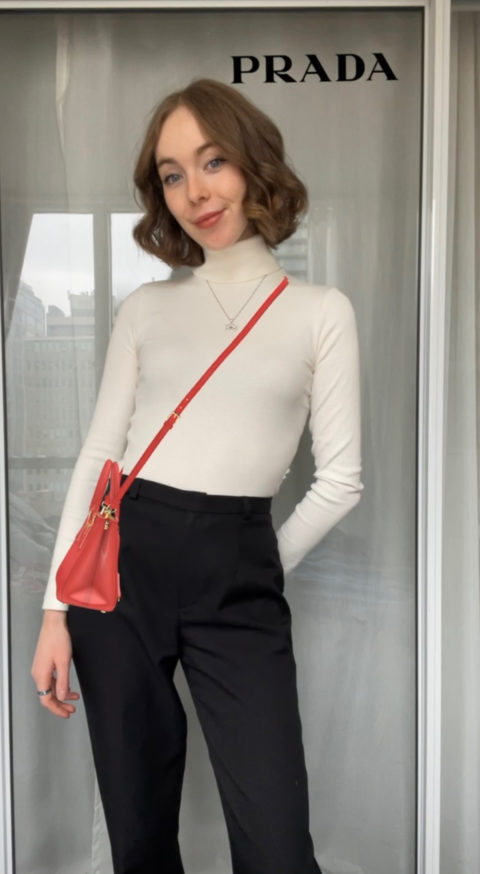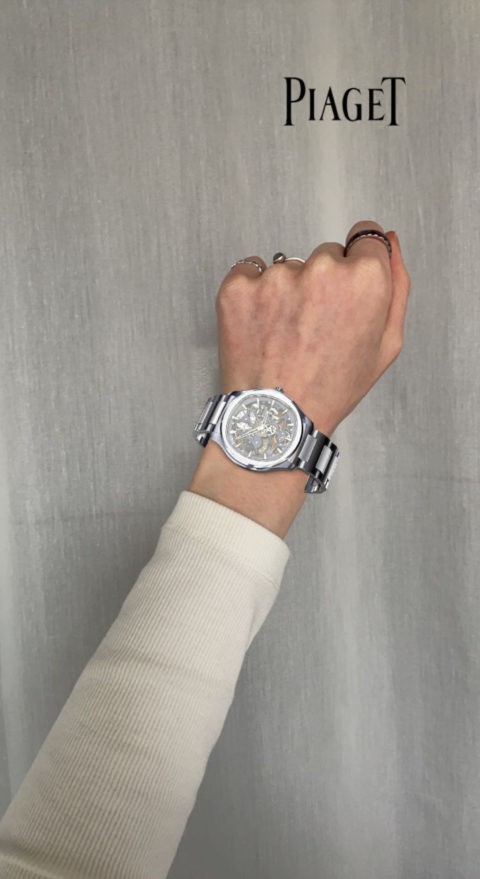It’s the shopping experience of the future.
This morning, I tried on nine Prada bags without ever leaving my apartment.
No, I don’t have a personal stylist who comes over with my outfit options for the week (I wish). Rather, I did this using the Snapchat augmented reality (AR) try-on feature.
The tool, which first launched in 2020 in a collaboration with Gucci, allows Snapchatters to use their cameras to virtually try on clothing, accessories and makeup as they move in real-time.
Parent company to Snapchat, Snap Inc., continues to expand its AR try-on feature by collaborating with retailers like the aforementioned Prada, Kaja beauty, NYX Cosmetics, MAC Cosmetics, YSL, North Face and watch brand Piaget Polo.
When trying something on, the product appeared on camera and moved with me as I moved. I could take photos and videos with each virtual item, and there are links on-screen to the respective brands’ websites so that users can easily buy the product if they like it.

As the holidays approach, the social media platform is hoping to use the feature to appeal to shoppers, and it appears that users are receptive. On December 1, Snap Inc. reported that 84 per cent of Canadian Snapchatters are interested in AR try-on experiences.
Over the course of the pandemic, many of us have become accustomed to online shopping, and this year, studies show that 52 per cent of Canadians plan to do their holiday shopping online. But the downside of this is the inability to try something on before making the purchase. Enter Snapchat.
The brand’s global head of fashion and beauty partnerships told Business of Fashion that Snapchat doesn’t profit from the sales fashion companies make using its AR tool.
Instead, it offers the feature to give convenience to its largely Gen Z audience, adding that it also helps brands to “future-proof” their businesses by tapping into the trend.
The appeal of AR try-on is becoming more evident as our real life melds with the online world. With digital clothing making headway in the fashion industry, AR try-on allows you to see what a product looks like on camera before receiving the physical item.
In a way, it flips the physical shopping experience on its head by creating a comfortable environment. You can try an item for however long you want and take your time deciding. When testing out the Prada bags, I was able to switch between colour options by simply swiping my hand back and forth in front of the camera — this is called “gesture recognition,” and it’s pretty cool.

With other items like Gucci shoes or a Piaget Polo watch, the camera detects a specific body part meant to don the item — like your foot or your wrist — and gives the appearance that you actually have it on.
While trying on an item, the brand’s logo appears, and there are sometimes filters or designs that adorn the screen. With AR, it’s not just that you go into a store and see the shoe or bag on a shelf — it feels like a personalized experience.
As the fashion industry buzzes with news about digital fashion and what clothing could look like in the future, AR try-on shows us how pixel-made clothing and accessories can be implemented in our daily lives.
